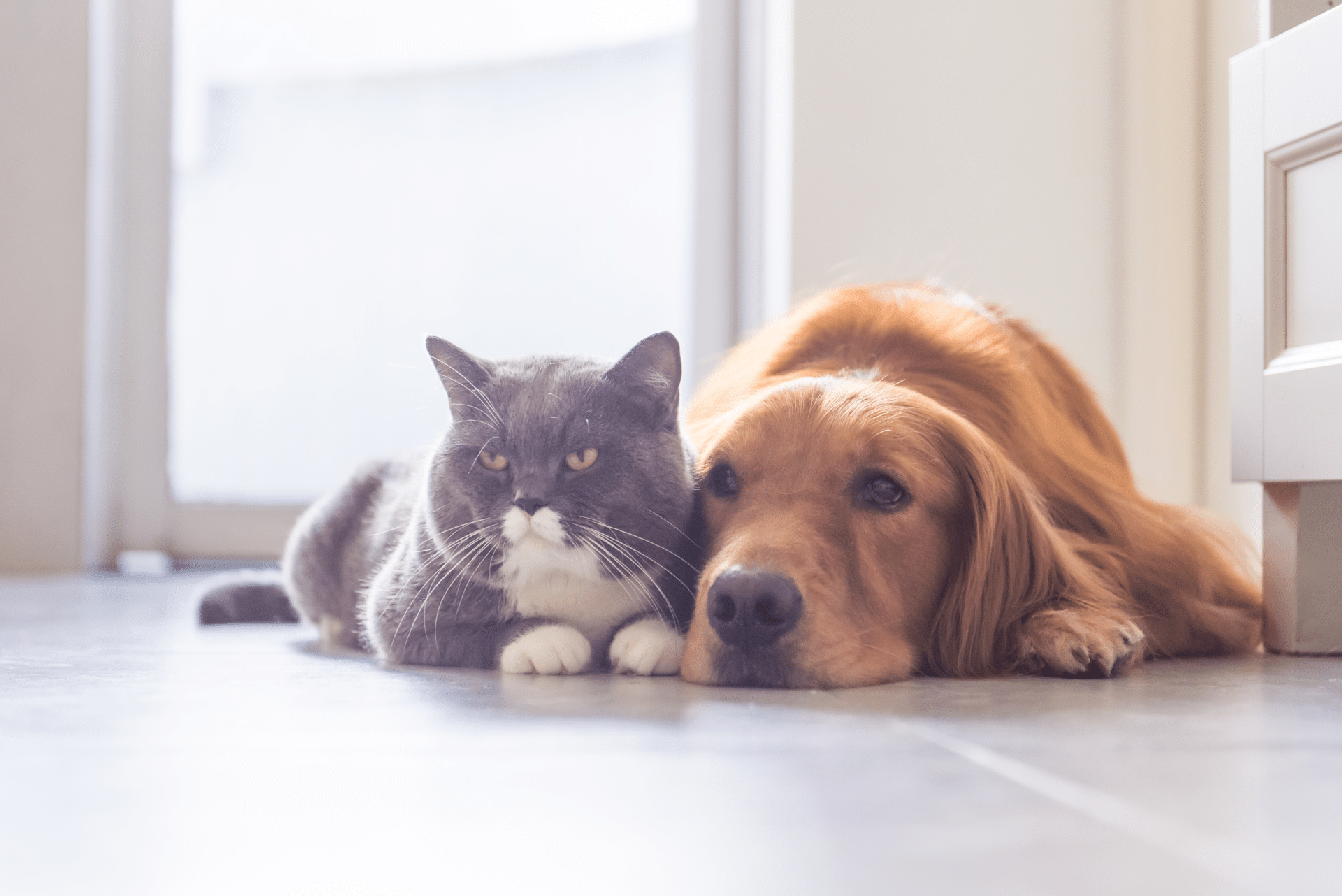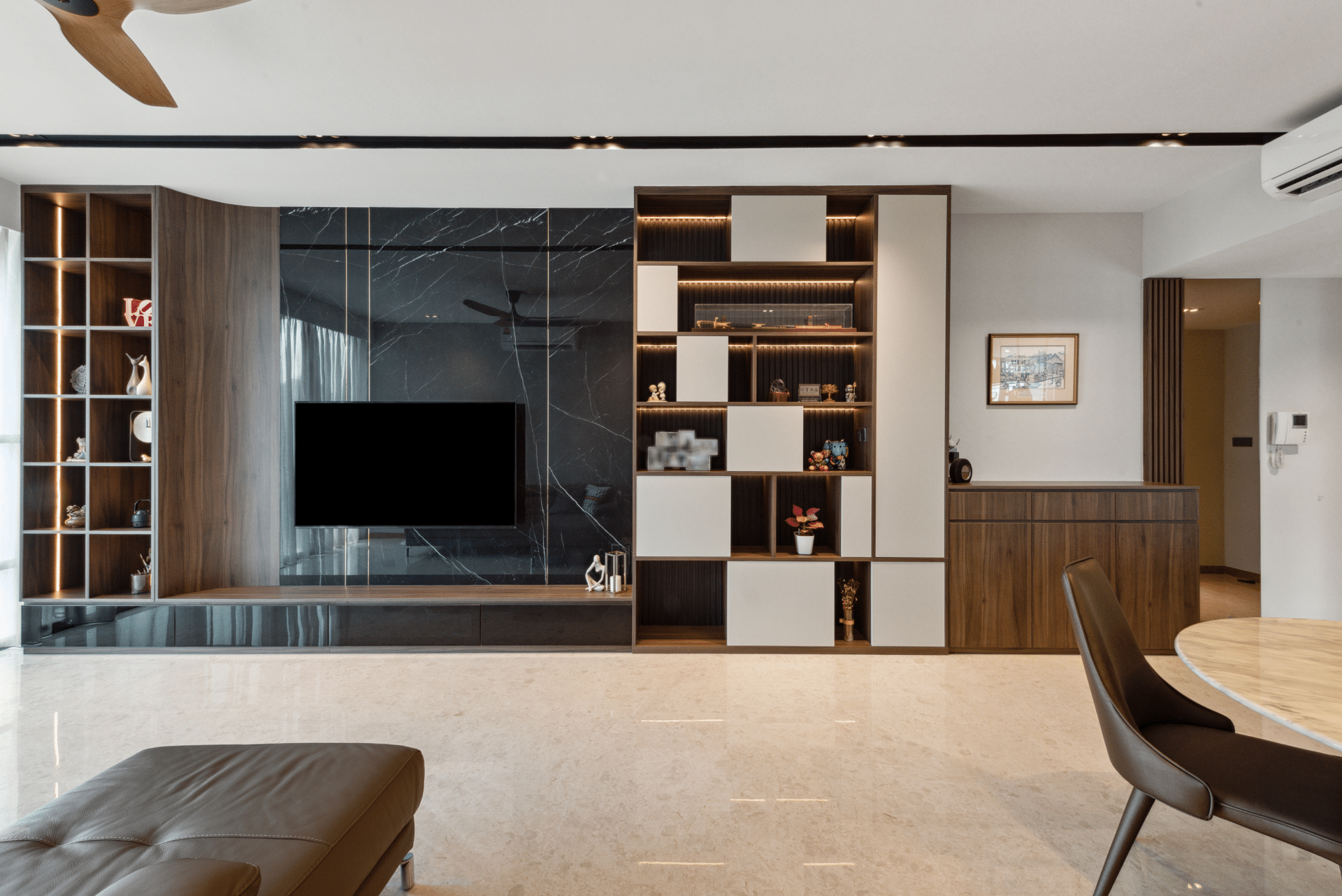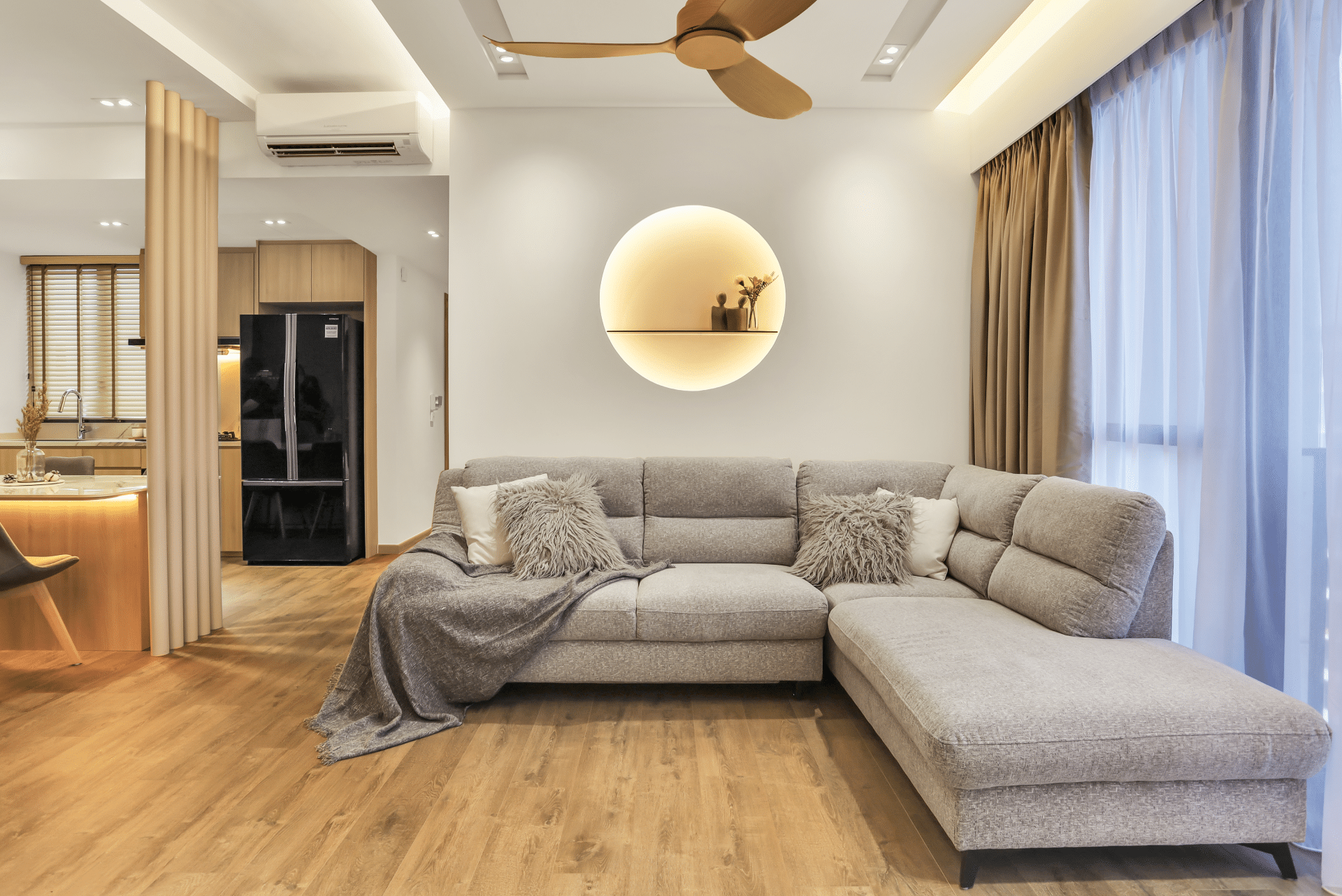Pet-Friendly Design Tips For Your Singapore Home
Pet ownership comes with its difficulties within a dense and urban setting such as that found in Singapore, however. One has to consider limited space, noise issues, cleanliness, and wear and tear of the property. However, by carefully choosing specific pet-friendly designs for house construction, you can create a cozy refuge according to yourself and your pets’ demands.
Tips for pet-friendly home design. Flooring, furniture, storage, doors and windows, backyard changes, etc., will be considered as a guide. Your house will look good despite finding creative ways of taking care of feeding, grooming, play, and potty times. In this blog post, we will discuss pet-friendly home design tips.
Common Challenges
Bringing a furry friend into your home comes with joy as well as unique challenges. Here are some of the most common obstacles pet owners face when adapting their living space.
-
Finding Housing That Allows Pets
One of the biggest obstacles is that many apartments and condominiums in Singapore do not allow residents to keep pets. This is especially true for dogs, which some view as noisy or messy. Here are a few ways to find pet-friendly housing: Check listings for specific mentions of allowing pets. Some real estate agents may know of pet-friendly properties as well.
Consider renting a landed property, as these individual houses are more likely to allow most kinds of pets than apartments. However, landed homes come with higher rents. Reach out to your local town council to learn about regulations in your neighborhood regarding keeping pets. If you already own your home, be sure to check with your condo management before getting a pet, as they may have banned certain animals. Being upfront and responsible can go a long way in getting an exception if pets are not allowed.
-
Affording Pet Care
Medical care, food, toys, and other expenses add up for pet owners. Costs are higher in Singapore than in many other locales. Strategies to save money include Adopting mixed-breed pets, as they tend to have fewer health issues than purebreds. Shelters and local organizations often have dogs and cats in need of homes. Buy pet food in bulk whenever possible. Look for sales. Avoid premium brands unless needed for a special diet. Groom pets at home instead of paying for professional services. Learn to trim nails, clean ears, brush teeth, etc.
-
Providing Adequate Space
Singaporeans normally live in more modest domiciles than other people. It is challenging, however, to ensure sufficient space for your pet. Ensure that you provide your dog with enough daily walks and exercises if they are going to live in less space. Seek to creatively offer them a space instead, such as portioning a room. Such pets as Chihuahuas that are smaller in size require a smaller amount of space. Put high cat trees and shelves for the cats to climb. Ensure you provide them with good toys and playing space.
-
Managing Pet Noise
In close quarters with neighbors, a barking dog or meowing cat can quickly become a nuisance. Here are tips to curb excessive pet noise: Train dogs not to bark unnecessarily through positive reinforcement. Provide plenty of toys and exercise to prevent boredom. Try calming aids like pheromone diffusers or CBD treats for anxious pets prone to vocalizing.
Always consult your vet first. Keep cats stimulated and entertained to cut down on meowing for attention. Provide scratching posts so they don’t damage furniture. Be considerate of neighbors and avoid leaving pets alone for long periods. Bring them inside if they make too much noise.
-
Mind The Mess
While pets boost moods, they definitely make messes, too. From muddy paws to shedding fur to occasional accidents, mopping, and vacuuming occupy much time! Start by choosing easy-clean finishes from floors to walls and selecting durable, washable furniture. Keep cleaning tools like durable rags, enzyme sprays, and pet hair removers handy in strategic zones.
For paws, placemats with catch-all fabrics inside and out to trap dirt. Maintain a separate set of old towels just for muddy dog cleanups. Plan quick surface wipe-downs after meals or play sessions to avoid buildup. Use cordless convenience tools like mini vacuums, steamers, or dusters to expedite upkeep too. Staying ahead of pet chaos keeps households fresh.
-
Providing Proper Waste Stations
Designate pet waste areas to help avoid unwanted cleaning woes. Puppy pad holders secure disposable pads in place for younger dogs. Some come complete with artificial grass trays resembling outdoor potties. Clean catch trays or litter boxes give cats needed spaces, too. If able outdoors, install cement, rock, or mulch pet relief zones. Border off sections within apartment complexes/housing developments to keep dogs off the grass.
Always provide bags and covered bins, making waste disposal easy for pet owners. Signage indicating pet relief areas ensures all known locations. Indoors, keep potties away from food prep or heavily trafficked zones. Bathrooms often work well when space allows. Install storage to tuck supplies out of sight. Take dogs out frequently, plus praise good behavior for the fastest success. With planning, pets easily learn routines, preventing unpleasant mishaps.
-
Check Compatibility
One often overlooks a key aspect of pet prep – ensuring the animal suits the home environment. For instance, energetic large dogs fare poorly in compact city flats. Twenty-pound cats overwhelm modest studios, too. Likewise, messy or destructive pets don’t blend well with meticulous homeowners. Always research breeds extensively, even when adopting mixed breeds. Learn about pet personality, activity levels, size, care demands, and temperament.
Ensure your household offers adequate space based on projected full-grown dimensions. A puppy may fit a condo, but not an adult retriever! Also, gauge your lifestyle and willingness to meet pet needs like training, exercise, grooming, and veterinary care. Matching pet personality and needs to housing situations prevents much grief for all involved parties!
-
Safeguard Belongings
Certainly, pets liven up living spaces. However, they also risk damaging valuables. For instance, swishing tails topple vases and lamps. Overzealous play leads to scratched furnishings. Bathroom trashcan raids create quite a mess! Therefore, display only sturdy décor items that are not prone to falling or breaking. Skip valuables pets might knock down or soil.
For instance, avoid accent tables with intricate objects to avoid smashed mementos. Also, keep bathroom doors closed and wastebins tucked out of reach. Moreover, apply scratch tape to vulnerable furniture edges. Finally, provide suitable outlets for natural pet behaviors. Set up a corner play zone with a cat tree or dog bed for raucous fun. Ultimately, some pet damage occurs despite best efforts. But planning prevents most mishaps!
Essential Tips
Pets can damage surfaces and materials with scratching, chewing, accidents, and shedding. Selecting durable, easy-to-clean flooring like tile or vinyl plank withstands heavy paw traffic. Keep these tips in your mind.
-
Entryways
A pet-friendly entryway keeps dirt contained while making it easy to come and go. Consider a small entry mat or tray to catch loose dirt from paws. Hooks low on the wall hold leashes neatly. A bench also provides a place to remove muddy shoes. Near the door, keep a basket stocked with towels for wiping paws and coats after walks.
-
Flooring
Hard floors like tile or vinyl withstand messes and are easy to clean. Use large area rugs over hard floors in main living areas for traction and softness. Choose rugs that can be cleaned easily and watch for tripping hazards at the edges. The carpet absorbs sound and offers comfort but requires frequent vacuuming and cleaning. Select low-pile carpet in high-traffic areas and save plush carpet for bedrooms.
-
Furniture
Choose furniture with removable slipcovers or fabrics that can handle pet wear. Leather and vinyl hold up well. Avoid delicate fabrics like silk or chenille, which snag and stain easily. If your pets are chewers, keep tempting wood trim out of reach or cover with metal trim guards. It is one of the best tips for designing a pet-friendly home.
-
Pet Feeding Station
Designate a feeding area with a mat that catches spills. Use elevated bowls to make eating and drinking comfortable for pets. Store food containers out of reach of pets. Consider an automatic pet feeder to portion meals. The feeding area should be easy to sweep and mop.
-
Litter Box Placement
Cats need at least one litter box per cat in your home, placed in accessible but low-traffic areas. Keep the litter box location quiet, private, and well-ventilated. Avoid placing litter boxes near food and water bowls. Add litter mats around boxes to catch loose litter. Consider litter boxes with lower entranceways for older cats.
-
Pet Beds And Crates
Provide soft beds in your pets’ favorite relaxation spots. Use washable bed covers for easy cleaning. Place plush pet beds in bedrooms or other carpeted areas. Set up crates with comfortable bedding to give pets a quiet den space. Locate crates away from high-traffic areas but still close to family activities.
-
Pet Play Spaces
Dogs enjoy having indoor play spaces for fetching toys and burning energy. Use large rugs or mats to designate pet play areas. Keep toy baskets handy. Install shelving or cubbies to store leashes, towels, toys, and other pet supplies. Consider an indoor pet fence area for small dogs. Provide scratching posts and climbing towers for cats.
-
Outdoor Access
nstall a pet door leading to a securely fenced yard so pets can spend time outdoors. Be sure the yard is fully enclosed and shaded spots are available. Consider an outdoor water station and a place for pets to take shelter from rain and sun. Extend your indoor flooring, like tile or vinyl, to an outdoor mudroom space.
With a few simple plans, you can design a stylish, comfortable home in Singapore that meets both your needs and your pets’ needs. Focus on durable, easy-to-clean materials and provide designated pet areas. Your pets will feel right at home.
Keeping pets can be very rewarding, but it also comes with unique difficulties in the dense urban environment of Singapore. Here are some common challenges pet owners face and tips on overcoming them.
-
Inaugurate Permanent Pet Fences
Instead of movable gates to restrict pets, permanent fences work better. Movable gates get knocked down and stepped over by clever pets. However, permanent pet fences integrated into room dividers stay put. For example, glass room dividers with a pet door allow light through while separating spaces. Or, one can install half-walls with a gap at the bottom for pets to peek through. Permanent fences incorporated into built-ins like bookcases are also options. Sturdy, permanent fences keep pets safely in their space.
-
Use Color To Hide Fur And Stains
No matter how much one brushes or cleans, pet fur still gathers everywhere. However, certain colors and patterns disguise shedding fur better than others. For instance, textures like tweed or herringbone obscure fur and stains. Dark colors like chocolate or charcoal gray also hide pet evidence well. Conversely, skip light or plain fabrics like smooth beiges. Those show every bit of fur and every stain. Strategically utilizing fabrics where fur blends in reduces maintenance substantially. One spends less time removing pet hair.
-
Choose Pet-Safe Houseplants
Many common houseplants prove toxic for curious animal companions, leading to nausea or worse if ingested. Ensure home greenery stays safe by selecting pet-friendly varieties. For example, the spider plant filters air without harming pets. The parlor palm also purifies safely. If unsure, the ASPCA has lists of poisonous and non-toxic plants for reference.
-
Install Smart Home Tech
Innovative technology makes monitoring and caring for home-alone pets much easier nowadays. WiFi cameras allow owners to check on and speak to pets from smartphones. Automated feeders and water fountains provide meals on schedule. Even smart litter boxes measure usage remotely. Consider convenience features like app-controlled pet doors and lighting, too. Smart home advancements offer safety, companionship, and care while away. Tech makes a home even friendlier for both pets and owners.
-
Hide Wires And Cables
Curious kittens and teething puppies see dangling wires and cables as toys waiting to be played with. Protect precious electronics by neatly hiding any visible cords. Simple wire covers neatly conduit cables behind furniture and along baseboards. For larger setups, consider an outlet with cord management to stow excess neatly. Cable raceways attached under desks or media consoles corral messy wires out of sight, too. Concealing wires deters chewing and injuries. It also contributes to a cleaner, pet-friendly home environment.
-
Hire A Company
If you’re a pet owner dreaming of a stylish, functional home tailored to your furry companions’ needs, professional help is available. Rather than struggle with the challenges yourself, partner with an experienced interior design firm well-versed in pet-friendly spaces. They’ll expertly blend form and function to create a welcoming habitat even in dense Singapore.
The IDID team brings fresh eyes to analyze your existing layout. They consider your pets’ ages, breeds, temperaments, and bathroom schedules. This allows finely tuned customization to support healthy, happy animals who coexist in harmony with human housemates.
Final Thought
In short, small touches make dwellings drastically more livable for both owners and pets. Durable, waterproof surfaces handle messes better. Clever storage keeps necessities accessible yet out of the way. Safety measures protect curious pets, too. Finally, technology adds convenience to remote caregiving.
Keeping animal companions in mind when designing, building, or decorating pays dividends for all. Pets bring joy; after all, they are no hassle. With the right pet-friendly choices, homes withstand wear while whole families, including pets, thrive happily. Arton Boutique and Hotel Boss are hotels in Singapore that allow pets. We hope this blog post about pet-friendly home design will be helpful.



